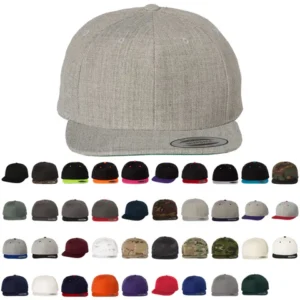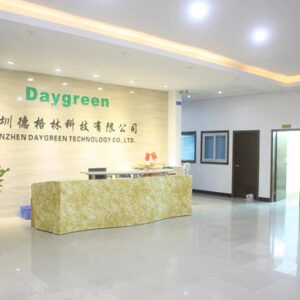Mold is a problem that goes unnoticed beneath the glitzy exterior of Los Angeles, a huge metropolis known for its sunlight and lively lifestyles. While the city’s diverse microclimates, from coastal humidity to inland warmth, contribute to its unique allure, they also create ideal conditions for various mold species to thrive within properties. For homeowners, real estate professionals, and property managers alike, professional Mold Testing in Los Angeles is far more than a precautionary measure; it’s an indispensable diagnostic tool for safeguarding health, preserving property integrity, and ensuring peace of mind in a dynamic real estate market.
The Nuances of Mold Growth in the City of Angels
Mold spores are ubiquitous in our environment, but it’s the right combination of moisture, warmth, and organic material that allows them to colonize and flourish indoors. In Los Angeles, several factors contribute to this:
Coastal Influence & Humidity: Areas closer to the Pacific experience constant marine air and high humidity, which can lead to condensation on cooler surfaces, quietly feeding mold growth behind walls, under floors, or within attics.
Aging Infrastructure: Many of LA’s charming older buildings, while architecturally significant, often possess outdated plumbing or roofing that can develop slow, hidden leaks, creating persistent dampness ideal for molds like Acremonium or Chaetomium.
Wildfire Aftermath: A unique challenge for parts of LA is the moisture introduced by extensive firefighting efforts. Water used to extinguish fires, combined with post-fire humidity, can trigger significant mold growth in structures that were otherwise spared flames.
Poor Ventilation & Condensation: Modern, tightly sealed buildings or those with inadequate exhaust systems can trap moisture from everyday activities like cooking and showering, leading to condensation build-up and mold growth, even in seemingly dry areas.
These diverse conditions mean that mold issues in Los Angeles are rarely straightforward, often developing silently behind finished surfaces. This complexity underscores why specialized Mold Testing in Los Angeles is essential.
The Diagnostic Journey: Uncovering Hidden Dangers
Effective mold testing goes far beyond a simple visual inspection. Many of the most problematic mold colonies, like Stachybotrys (often called “black mold”), prefer dark, hidden spaces behind drywall or under flooring. The diagnostic process is a meticulous journey designed to uncover these hidden threats:
Initial Consultation & Symptom Analysis: The process begins with a detailed discussion of your concerns, including any musty odors, visible signs of mold, or unexplained health symptoms experienced by occupants (e.g., persistent allergies, respiratory issues, fatigue). This helps guide the investigation.
Comprehensive Visual and Moisture Inspection: Certified inspectors perform a thorough walkthrough, utilizing advanced tools like moisture meters and thermal imaging cameras. These technologies can detect hidden moisture pockets within walls, ceilings, and flooring that are not visible to the naked eye. Identifying the moisture source is paramount, as mold cannot thrive without it.
Strategic Air Quality Sampling: Air samples are collected from various indoor locations, as well as an outdoor baseline sample. These air samples capture airborne mold spores, providing data on spore counts and types circulating within your property. Comparing indoor levels to outdoor levels, as well as to healthy indoor standards, offers critical insights into the building’s air quality. This is especially vital in Los Angeles, where outdoor spore counts can fluctuate due to environmental factors.
Surface and Swab Sampling: When visible mold is present, or suspected in specific areas, surface samples (tape lifts or swabs) are collected. These samples provide a direct identification of the mold species growing on a particular material, confirming its presence and type. Common molds like Cladosporium, Aspergillus, and Penicillium are frequently identified through these methods.
Independent Laboratory Analysis: All collected samples—whether air, surface, or swab—are submitted to an independent, accredited third-party laboratory. This ensures unbiased and highly accurate identification of mold species and quantification of spore counts. The laboratory provides scientific data that forms the backbone of the mold assessment report. For reliable results, always insist on professional Mold Testing in Los Angeles that includes independent lab analysis.
The Clarity of the Report: Guiding Your Next Steps
Upon completion of the analysis, you receive a comprehensive report detailing the findings. This document is much more than just a list of mold types; it’s a strategic guide. It interprets the lab results, identifies the likely sources of moisture, assesses the extent of the mold problem, and provides clear, actionable recommendations. This clarity is invaluable, empowering you to make informed decisions regarding remediation, ventilation improvements, and preventative measures. Whether you are dealing with a small localized issue or a more extensive infestation, expert Mold Testing in Los Angeles provides the scientific basis for effective intervention.
Peace of Mind and Property Preservation
The presence of mold can significantly impact both the health of occupants and the structural integrity and value of a property. Proactive Mold Testing in Los Angeles can save homeowners from costly future repairs and potential health complications. It provides definitive answers, replacing uncertainty with informed action. Choosing a reputable, independent mold testing service ensures you receive an unbiased assessment, restoring your peace of mind and protecting your significant investment in the City of Angels. Trusting a professional for Mold Testing in Los Angeles is the first, crucial step toward a healthier indoor environment.




